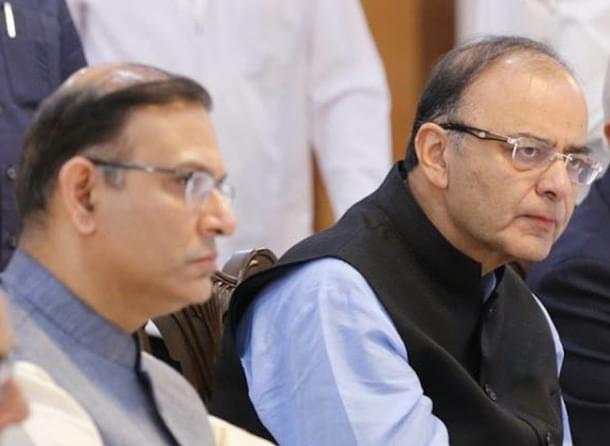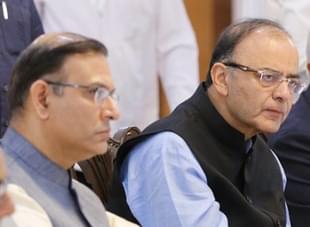Books
Only 1.5 Lakh Ultra-Rich? Govt Isn’t Looking In Right Places; Land Law Must Have Created 50k Crorepatis In 2 Years
R Jagannathan
Apr 04, 2016, 02:00 PM | Updated 02:00 PM IST
Save & read from anywhere!
Bookmark stories for easy access on any device or the Swarajya app.


Here’s a quiz: if you have robbed
half the houses in a colony, if you still like the idea of pursuing this hobby,
would you focus your efforts on the half you have already robbed, or the ones you
haven’t? Isn’t it more likely that those already robbed may have less to offer you
than those yet to be touched?
The Indian taxman has not asked this
basic question while deciding that it will go after those it has already taxed
well. A few days ago, the government decided to ask those with incomes above Rs
50 lakh to declare their assets while filing this year’s returns. Obviously, it
wants to find out whether your assets are disproportionate to your declared
sources of income. But you will get trapped only if you don’t know this already.
Chances are very few high net-worth individuals will declare assets that are
out of whack with this declared incomes.
Among other things, a new schedule in
the ITR (income tax return) for assessment year 2016-17 (that is, the returns
you will file this July for financial year 2015-16) will seek information on
properties, investments, and moveable assets like cars. It will make tax filing
a more complex affair, leading to needless documentation and potential
harassment at the hands of unscrupulous tax babus, and maybe another round of
subtle tax terrorism. The long-term trend should be towards simplifying
paperwork in tax payments, not increasing it.
To counter this criticism, Revenue Secretary
Hasmukh Adhia said the other day that the extra hassle will impact very few
people - only the
“ultra-rich”. He said on twitter: “There are only 1,50,000
individuals and HUF (Hindu Undivided Families) showing income more than Rs 50
lakh per annum. So 99.5 percent taxpayers are not affected by this requirement.
Only the ultra-rich will have to give this information in their IT returns.”
This is interesting. One would have thought the
ultimate purpose of tax policy should be to expand the tax base and not focus
on the same guys (and a few gals) who are already declaring incomes above half
a crore. If India has only one-and-a-half lakh “ultra-rich”
individuals, the taxman should be looking for more individuals who may be
ultra-rich and evading taxes, not making life tougher for those who are already
declaring themselves as ultra-rich.
This is not at all to suggest that the 1.5 lakh
ultra-rich taxpayers are all honest, but to expand the tax base, Arun Jaitley has
to look at those who may have high incomes but have not paid (or may not be
paying) taxes. So, rather than asking the ultra-rich to declare their assets to
figure out their incomes, Hasmukh Adhia should be finding out who has bought
high-priced assets or obtained high-octane income during any year and is still
not a commensurate income taxpayer.
The ITR already needs you to give details of all
your bank accounts, and bankers are expected to report transactions above a
certain level to the taxman (find out which transactions invite tax scrutiny
here). So, it is not as if the government does not know who owns the big assets
and still declares non-commensurate low income. This is where the taxman will
find his real “ultra-rich” tax evaders, not among those already
declaring incomes above Rs 50 lakh.
The reason why the government finds too few
ultra-rich individuals is because it may not be looking in the right places.
Let me give you just one example.
In the current financial year, the
National Highways Authority of India (NHAI), the main land acquisition agency
for building highways, is paying Rs 2.2 crore per hectare to acquire 9,000
hectares of land. This means government is paying just under Rs 90 lakh per
acre of land – and it is purchasing over 22,200 acres of land. (Note: 1 hectare is 2.47 acres).
This means – assuming farmers are
selling just one acre of land on an average – we are talking about the creation
of 22,000 near-crorepatis in just one year, 2015-16. Next year, the government
plans to acquire 12,000 hectares, which means nearly 30,000 new crorepatis. It
could be more, for payments next year will surely be higher. And we are not
counting the crorepatis already created in the past few years after land prices
were jacked up.
So, in just two years, the government’s
road-building plans would have created 50,000-and-odd crorepatis, and even if
all this money were to be put in humble bank accounts, their annual incomes would
be over Rs 7 lakh per acre sold, enough to bring them into the income tax
bracket.
The fact is the high price of land is
making new crorepatis in every pocket close to urban areas. Even if some of
them continue to remain farmers on the balance landholdings they own, they
ought to be brought into the tax net by virtue of their net worth. Farm incomes
are exempt from tax, not income from land sales.
Take the Navi Mumbai airport. Cidco,
which has acquired land from farmers in the area, has discovered that the
compensatory land given to those whose land was acquired already commands a
value of Rs 10 crore an acre, as builders see potential in the surrounding real
estate once the airport is built. Other brokers say land may even fetch Rs 20
crore an acre. This means there should be at least a thousand dollar millionaires being created in an
around Navi Mumbai just due to this one project. Is the taxman looking at these
new crorepatis?
The chances are in the government is going after only the ardh-crorepatis from the corporate sector when thousands of new crorepatis are being created every year merely through the land acquisition law and road-building.
Jagannathan is former Editorial Director, Swarajya. He tweets at @TheJaggi.





